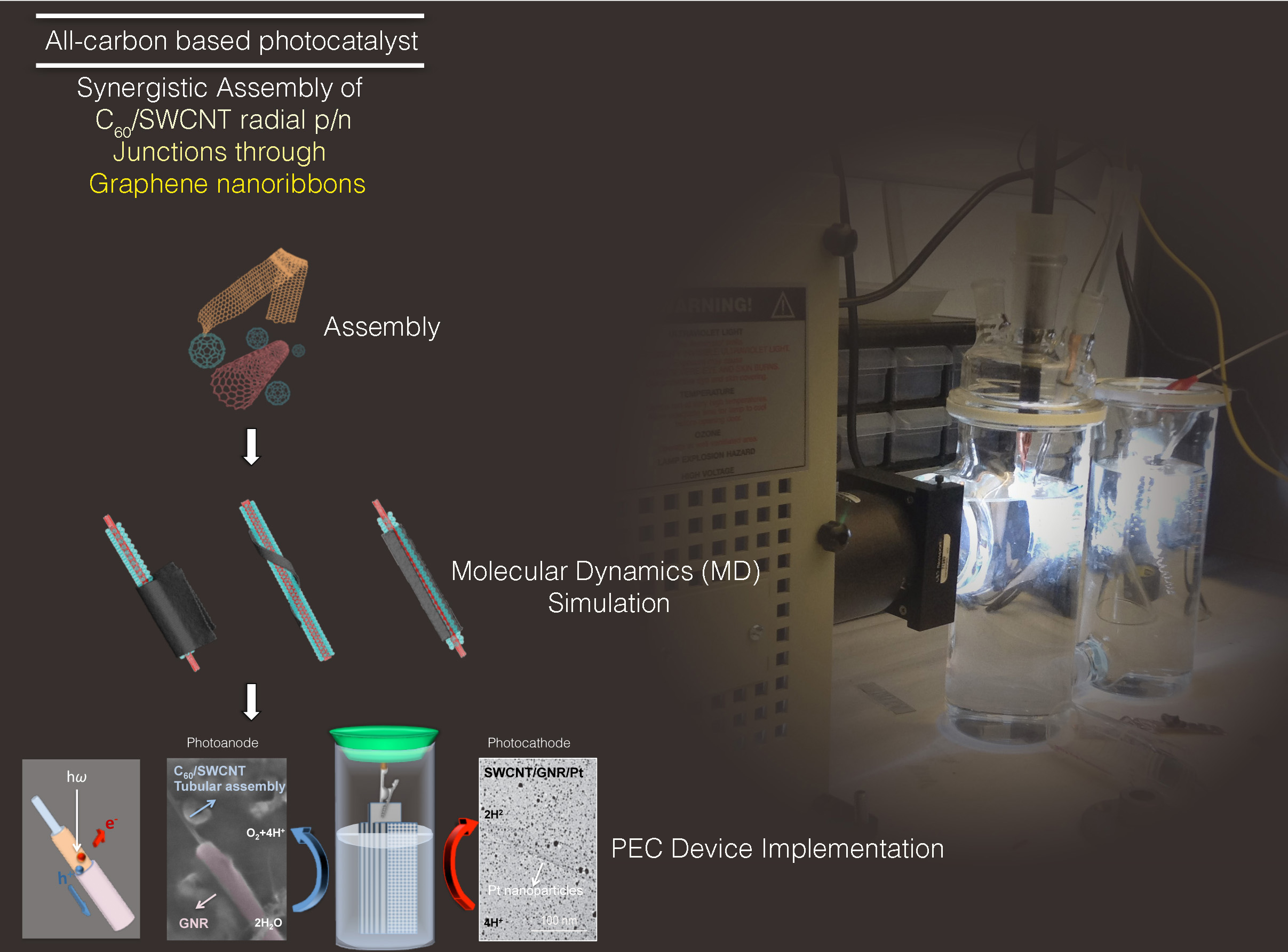All-Carbon Solar-Driven Water Splitting
The high-level goal of this research is to achieve high performance, all-carbon, solar-driven water splitting by understanding the synergistic co-assembly of earth abundant fullerenes (C60s), semiconducting single walled carbon nanotubes (SWCNTs) using graphitic nano-surfactants with engineered geometry-driven function. We employ novel experimental techniques and unconventional device architectures guided by fundamental modeling.
Nanoscopic p/n junctions made of p-type SWCNTs and n-type fullerenes can be greenly and conveniently assembled through the use of a water-processable graphene nanoribbon surfactant. The resultant all-carbon hybrids are stable for months without visibly distinguishable precipitation and can be spin-casted onto a wide variety of substrates. In addition to their chemically and mechanically robust nature, C60s have an ideal energy level (LUMO: 4.5 eV and HOMO: 6.2 eV) that straddles the oxidation and reduction threshold of water splitting as well as complementary absorption profiles that span the entire solar spectrum, making them well suited for implementation in Photoelectochemical cells (PEC) where redox reactions take place at semiconductor/liquid interfaces. This project focuses on taking advantage of these novel material properties. At the same time, complementary modeling is being performed to fundamentally understand the synergistic self-assembly of these materials with a focus on the relationship between graphene nanoribbon morphology and the structural stability of the self-assembled core-shell heterostructures. The predictions of the models provide guidelines for design of devices with optimized stability and efficiency.








